Baking a cake can be tricky at times. It almost seems like there's so much to take into consideration. However, it isn't an impossible task to do. It'll work out in your favor if you go in with a general idea—like when you should remove it from the pan. If that's what you'd like to know, let's find out what the bakers have to say!
After baking your cake, it will need some time to settle. If you attempt to remove it from the pan out of the oven, it will likely crack and fall apart.
To prevent this, you will have to wait anywhere around 10-30 minutes for it to cool down. However, you won't want it to cool completely. It should still be warm enough to maneuver out of the pan.
Now that you know when you should take a cake out of the pan, there could be more questions that will require answers. Questions like - how do you get a cake out of a pan without it crumbling? Furthermore, how can you tell if the cake is cool enough to move around? Is a simple eye test good enough for this situation? If you'd like to learn this and more, keep reading ahead.
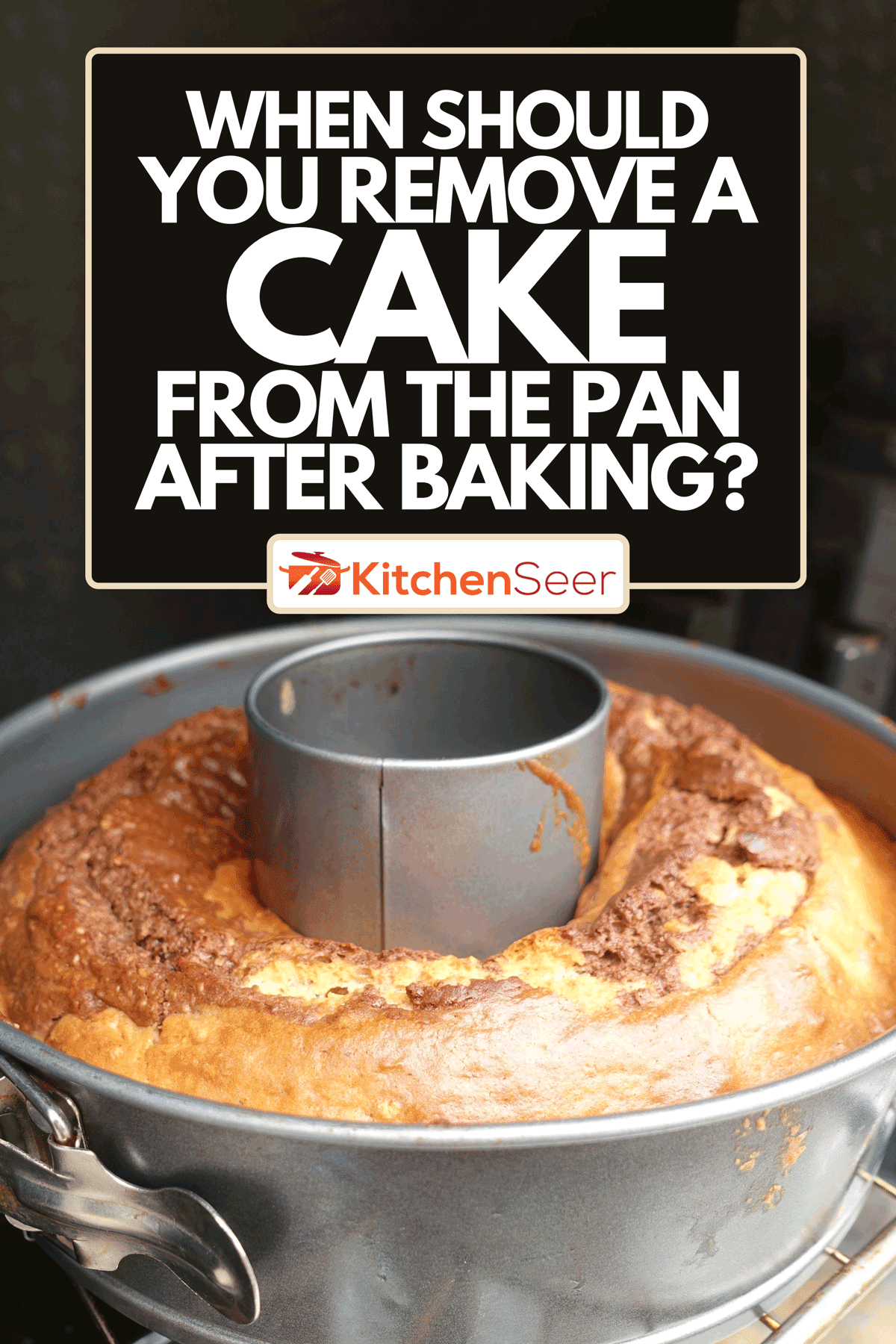
How Do You Get a Cake Out of a Pan?
Whether you're new to baking or are tired of having to fight tooth and nail to get your cake out in one piece, the annoyance that comes with a crumbled cake is like no other. Imagine dedicating a portion of your day to make a cake, and it doesn't come out as dreamy as you thought it would. Let's find a way to fix that.
The first way to do that is to set down a couple of rules when you're getting ready to take the cake out of the pan.
As mentioned, you shouldn't try to remove the cake out of the pan straight out of the oven. It will need some time to cool before you attempt it. For some, the timeframe of 10-30 minutes could be too vague of an answer. Would you have to wait on the lower range or towards the higher one?
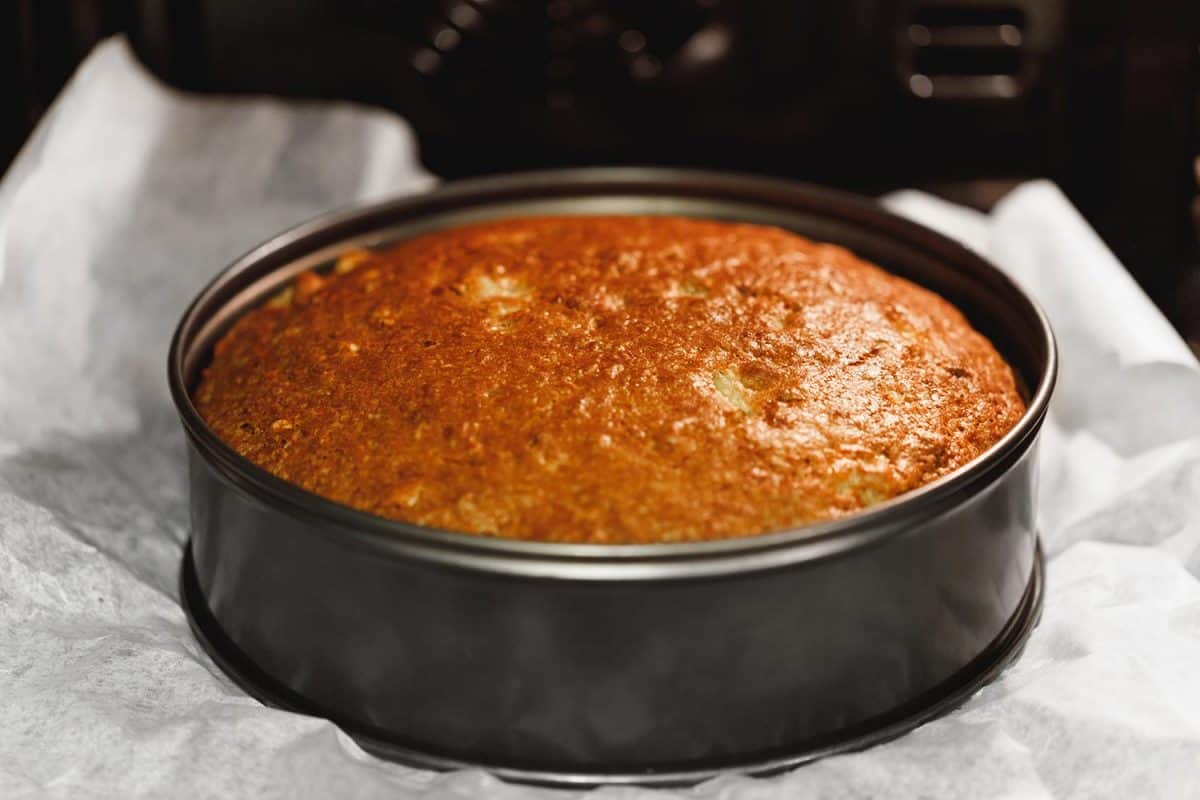
That will depend on the density of your cake. Is it a simple cake with no fillings? In this case, it would lean more towards the lower range. If the cake has filling, you'll need to wait until the center cools down completely. Waiting on the higher range will allow the starches in the cake to gel together. Additionally, fats will also solidify more.
Regardless, for the best results, wait for as long as instructed in your recipe. Only then can we begin to work it out of the pan.
Tips To Remove Cake From Pan
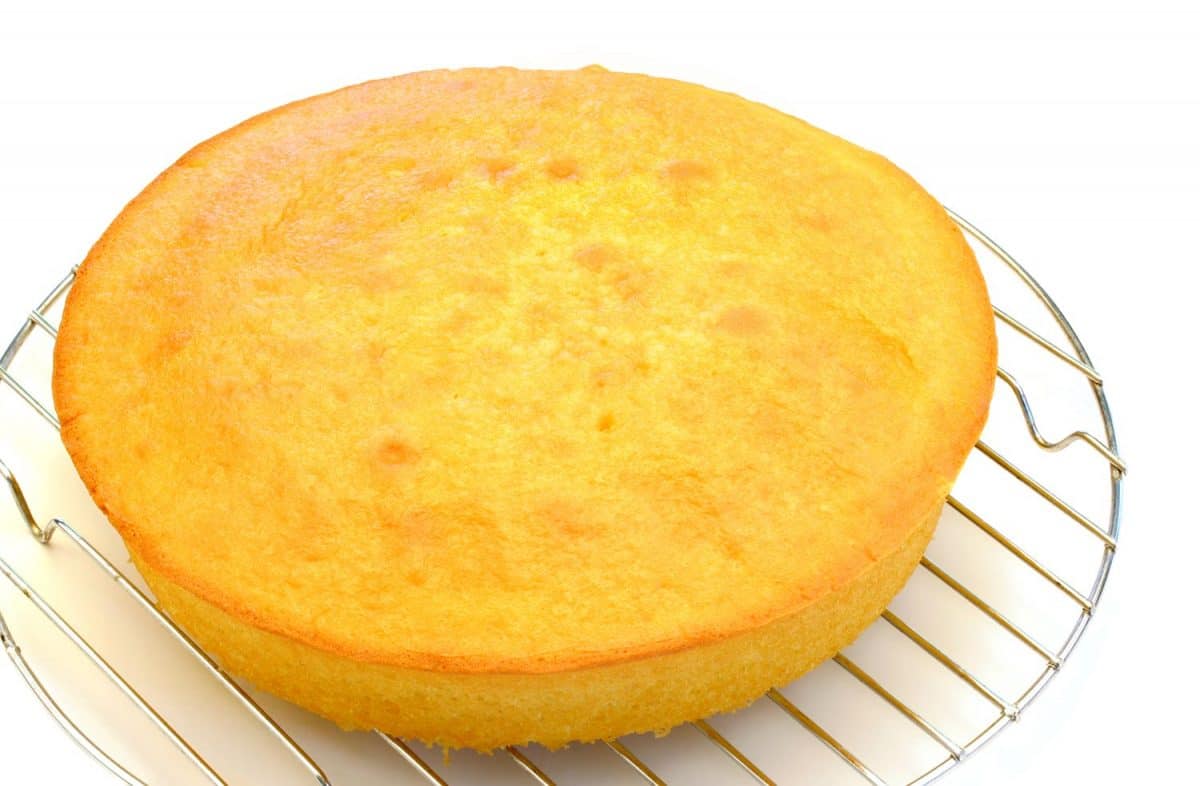
Once you've waited long enough, you can begin to remove the cake from the pan. To start, you can run a sharp, thin-bladed knife around the edges of the cake. Next, you'll either need a plate lined with parchment paper or a cooling rack. We'd suggest the former. This way, you can let the cake continue to cool upright.
Line a plate with parchment paper. Place it on top of the cake. Now, flip the pan over. The cake should fall onto the plate with the bottom facing upwards. From here, you can transfer it to a cooling rack.
Place the cooling rack on the bottom of the cake. You'll have to invert it gently. However, secure a firm hold of the cake between the rack and the plate. Once you've flipped it, remove the parchment paper from the top.
Now that it's on the cooling rack without any obstructions - let it cool down completely.
What if the Cake Doesn't Budge From the Pan?

While it would be great if everything went according to plan, there are some instances where you'll end up stuck in the first step. More specifically, the cake won't budge out of the pan. No matter what you try, it seems like the bottom is stuck.
In this situation, the cake should head back to the oven for an additional 3-5 minutes. You'll need to preheat the oven to 250 or 325 degrees Fahrenheit. Let the cake sit inside until it's warm enough. After 3-5 minutes, take it out and try to invert it again.
The cake should come right off of the pan. If the method above doesn't work, you'll need to put the cake in the freezer for six hours or more. This way, you can ensure it develops fully. So, when you try to pry the cake out of the pan, it's less likely to fall apart.
How Long Should a Cake Cool Before Cutting?
Now that we've covered when you can remove the cake from the pan, the next question you might have is if it's safe to cut at this point. The straightforward answer would be - no - you probably shouldn't. The process above concerns a step in baking called unmolding.
Unmolding the cake will ensure the edges won't get soggy as it cools down. However, this step will depend on the recipe you're following. Some will call for you to cool the cake inside the pan. Others will instruct the opposite case. You'll have to move the cake into a cooling rack to avoid soggy edges.
In either case, the 10-20 minute wait will not be enough to cool the cake completely. In general, a cake will take around 2-3 hours to do so. After this timeframe, the cake should have developed enough to be cut without too many problems.
How Do You Know When Your Cake Is Cooled?
Before we get into cutting the cake, we'll have to know if it's ready to be served. After all, you wouldn't want to cut into a cake when it's still cooling down. So, how can we tell if it's good to go?
Luckily, there are a few ways to tell. Each one will be a gradual step towards the cake being cool.
We'll first check the sides. The edges should be pulling away from the pan slightly. Additionally, they will have a darker coloration than the rest of the cake. However, the top should be a golden brown color.
Springing Back
Now we'll have to test the structure. For the first test, using your fingers, press down gently into the cake. The top should naturally spring back up. However, in some cases, the finger indentations will stay instead. When this happens, it means the cake needs more time in the oven.
Toothpick Test
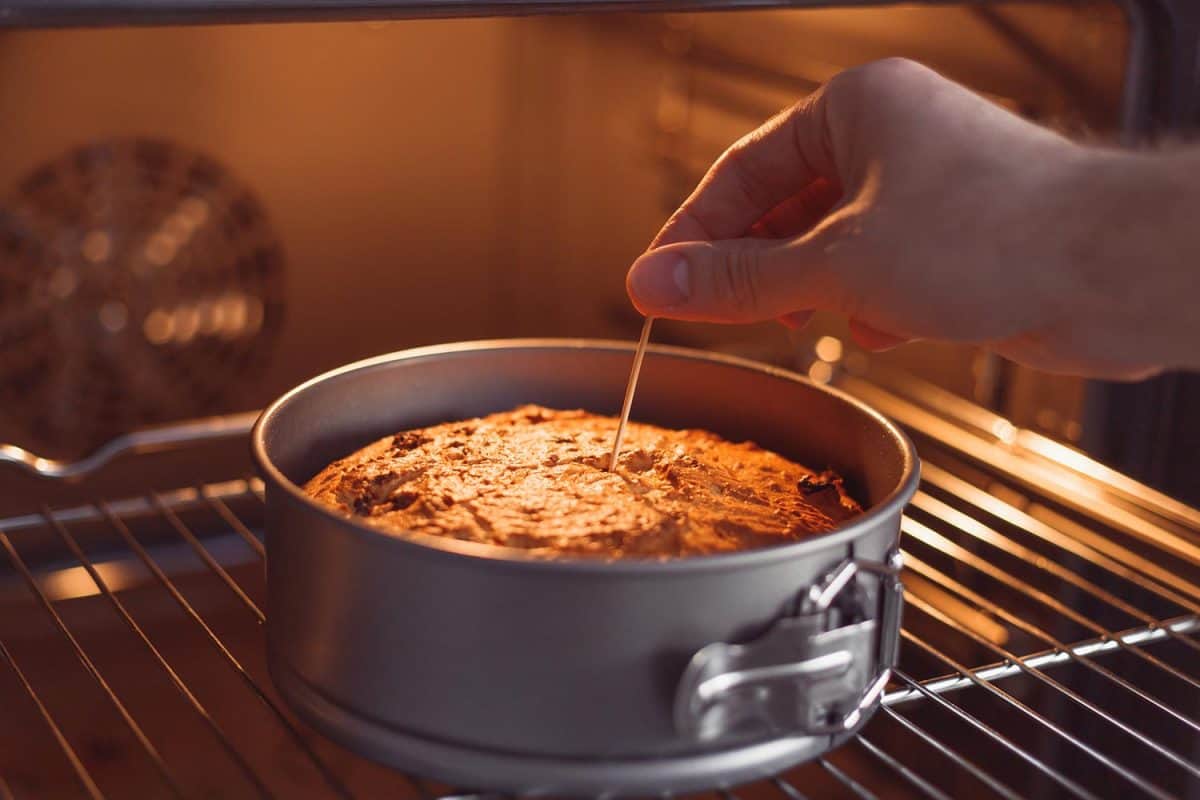
The next test we'll perform will require a toothpick. If you don't have any around, you can also use a small knife. In either case, insert the tool into the center of the cake. Pull it back out. The results you see on the toothpick/knife indicate if the cake is ready.
If it's ready, the tool should pull out of the center without any batter or crumbs. However, if you find batter or gummy bits of cake, it indicates the cake needs more time to cook.
Using a Thermometer
For this last test, you will need a thermometer. To begin, insert the thermometer in the center of the cake. It should read around 210 degrees Fahrenheit. If it does, the cake is ready to go. However, if you want better structural integrity, allow the cake to cool further.
How Do You Keep a Cake Moist After Baking?
A problem novice bakers run into when baking cakes is dryness. So, how can we retain the moisture? As some suggest, it comes down to how you will store it.
Perhaps you don't want to decorate it right away. So, you'll need to preserve the quality until it's time to prepare it. In that case, the cake will need an airtight container to retain its moisture. If you don't have one, you can also wrap it in plastic wrap.
From here, you have the choice of storing it at room temperature or in the freezer. On the counter, it will last around five days. In the freezer, you will have several weeks to decide when you're ready to prepare the cake.
If you don't need to hold it for an extended period, you may also frost it right away. The frosting will act as a barrier to the moisture in the cake.
Can I Leave a Cake in the Pan Overnight?
In some situations, we can't be bothered to remove the cake from the pan right away. So, we'll opt to leave it in the pan overnight. Now, you might be thinking, is that a good idea? The answer depends on how you store it.
As mentioned, the cake will need an airtight container to prevent moisture from escaping. It will need plastic wrap - even if you plan to leave it in the fridge. From here, some issues might arise from leaving it in the pan overnight. The most common one would be sticking.
To prevent it from sticking to the pan, you will need to unmold it. Then, lay a piece of parchment paper on the bottom of the pan. You're free to put the cake back into the pan to let it cool overnight.
Final Takeaway
While baking might seem challenging, it's not entirely impossible. It will take a bit of practice before you get the hang of things. Regarding cake, learning when and how to unmold it is the first step towards the dreamy products you've always wanted. We hope you found the information above helpful!
Before you go, do you have other cake concerns? Do you want more information on how to store a cake overnight? We can offer some tips. To learn more, check out our post, "How To Store Warm Cake Overnight."
Do you have problems with sticking? Are you wondering if greasing the pan would help? If you'd like to learn more, check out our post, "Should You Grease Silicone Molds And Cake Pans?"
Until next time - happy baking!

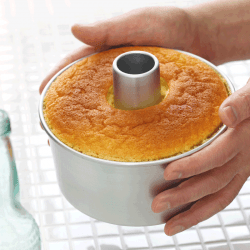
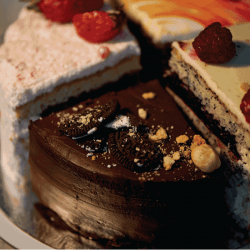
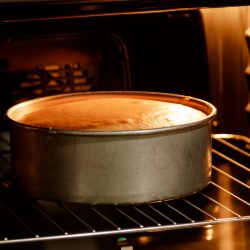
![A delicious chocolate and strawberry bundt cake on top of a table cloth, How To Easily Remove A Bundt Cake From The Pan [4 Methods To Try!]](https://kitchenseer.com/wp-content/uploads/2021/04/A-delicious-chocolate-and-strawberry-bundt-cake-on-top-of-a-table-cloth-250x250.jpg)
![fresh and homemade prepared batter for brownies with nuts served on a baking tray on rustic and wooden table - How Many Cake Mixes For A Half Sheet Cake? [And Full Sheet Too!]](https://kitchenseer.com/wp-content/uploads/2022/03/fresh-and-homemade-prepared-batter-for-brownies-with-nuts-served-on-a-baking-tray-on-rustic-and-wooden-table-250x250.jpg)
